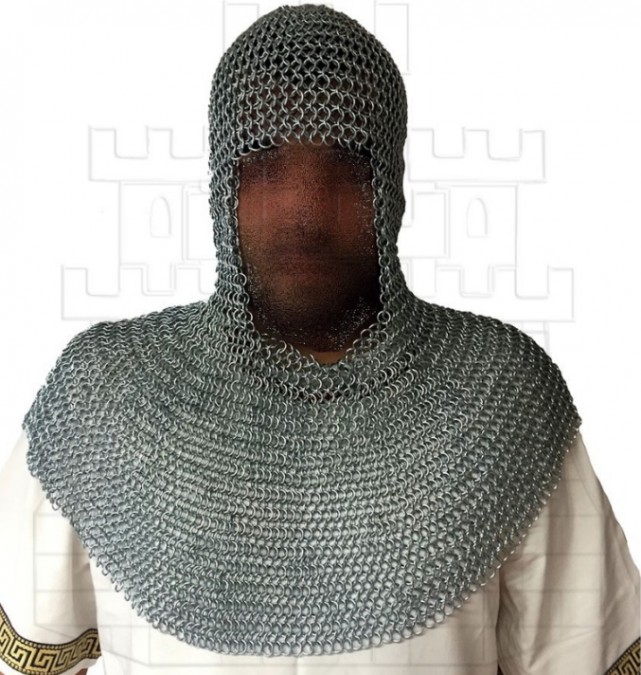What is an almófar?
The almófar, also known as the verdugo or coif, is an iconic piece of medieval armor designed to provide protection to the head, neck, and shoulders on the battlefield. Its design, which included a flexible structure, allowed warriors to move with greater agility compared to more rigid armors. Among the most notable varieties are the camail and the aventail, each with particular characteristics that increased effectiveness in defense.
The camail is a specific type of almófar made of interconnected metal rings, forming a mesh that was worn over the head and extended down to the shoulders. This protection provided excellent defense against cuts and punctures, acting as an additional barrier in combat. It was a fundamental piece of equipment for many knights and soldiers of the time, not only for its defensive utility but also for its imposing appearance.
On the other hand, the aventail consists of a chainmail hood that attaches to the bottom of the helmet, extending to cover the neck and shoulders. Its design was aimed at protecting these vulnerable areas of the body from direct attacks, ensuring that the warrior was well-protected during combat. Often, aventails were crafted with great skill, which also reflected the status of the wearer.

In the Middle Ages, the almófar was not only a tool of defense; it also held a symbolic component. The quality and design of the armor, including the almófar, could indicate the rank and wealth of the warrior. Moreover, almófars were subject to combat practices and the development of military strategy, making them a fascinating element in military history.
In conclusion, the almófar, in its various forms like the camail and the aventail, played a crucial role in protecting medieval warriors, safeguarding vital areas of the body in a time when battle was a constant in life. The study and understanding of these pieces offer us a deeper insight into the armor used in that era and the importance of each component in the survival of warriors on the battlefield.
















